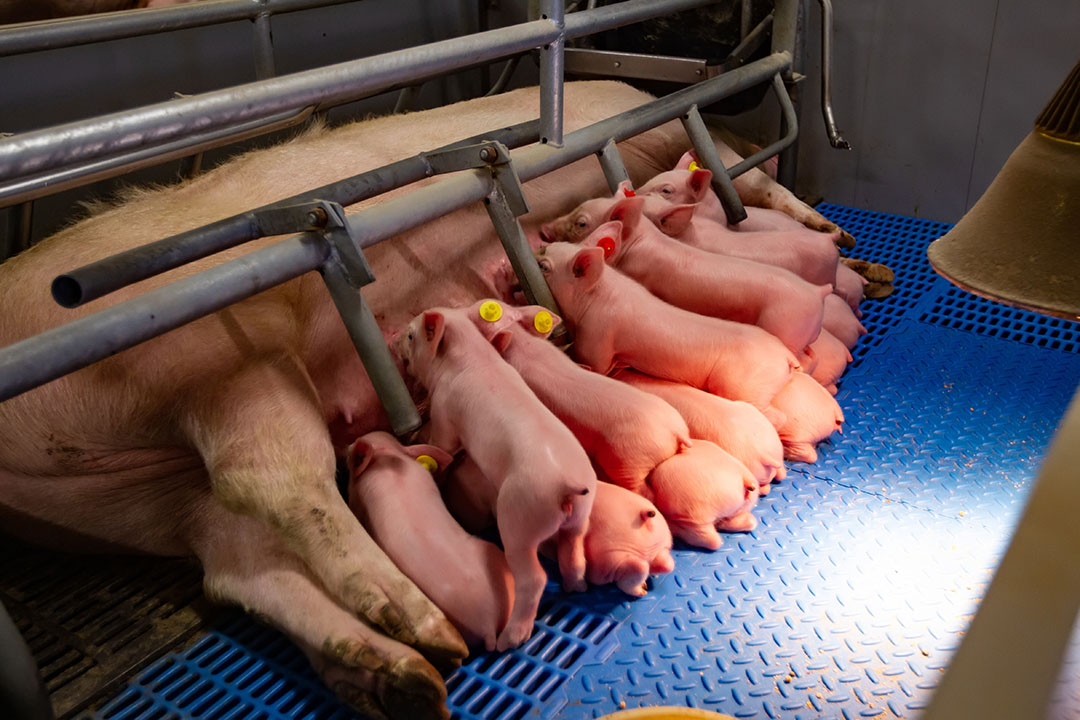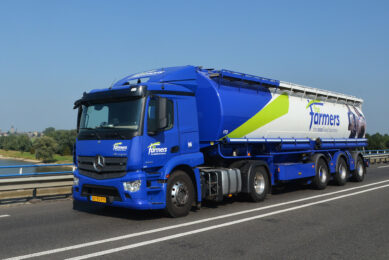Feeding the high-performance sow

Having 30 piglets per sow per year is starting to become common practice. At the same time, this puts pressure on the sow. Increased focus on keeping pre-weaning mortality low and sow health high is therefore a prerequisite for a good performing pig farm.
This was one of the conclusions of a recently held event at the IPPE in Atlanta, US. The event was hosted by the American Feed Industry Association’s (AFIA) nutrition committee. Experts discussed how to maximise a sow’s lifetime productivity with nutrition, understand the impact on the health of the sow and they took a deep dive into sow gut health – how the sow’s microbiome may affect her progeny.
Factors influencing prolapses
Jason Ross from Iowa State University in the US kicked off the seminar by explaining the sow health challenges in today’s production systems. Mr Ross explained that sow mortality, especially due to prolapses, has increased the past 5 years in the US swine industry. “It has become a significant welfare and production issue and no good understanding of root causes are known at this time”. This has spurred the National Pork Board in the US to start a project on this topic to further identify risk factors associated with Pelvic Organ Prolapse in the US sow herd. The Iowa State University was also involved in this project. Mr Ross explained some of the early results of this project which looked at, factors that don’t seem to have a relationship with prolapse incidence (a red score), factors that could have a relationship with prolapse incidence, but there was only moderate evidence (an orange score) and factors that seem to have a relationship with prolapse incidence and therefore need further investigation to identify causation (a green score). “From our data set we have gained some interesting results in which factors can be categorised in the red, orange and green category. We found that herd size, induction protocol, sleeving protocol, tail length, hygiene and particle size have no direct relationship with prolapse incidence in sows. Factors that have a moderate evidence are geographical region, sow housing, laxatives, mycotoxins, health status and disease outbreaks, nutrition and genetics. Factors that we think do have a direct link are water quality, body condition, antibiotic usage, bumped-up (increased) feeding strategies and perineal score. We are therefore will look further into these effects in follow-up studies”, he said.
Essential fatty acid supplementation
Eric van Heugten from North Carolina State University in the US presented some of the latest insights on high efficiency nutrition for maximal lifetime production. “The modern sow has more requirements for nutrients. Especially when high performing sows experience heat stress or are in lactation for example”, Mr Van Heugten explained. He further addressed the fact that a lactating sow produces almost as much milk as a high producing dairy cow, translated to bodyweight equivalent. This means that the sows require high energy diets. Mr Van Heugten touched on a few studies that looked into the supplementation of lipids (level and type) during lactation on subsequent reproductive performance. In one study, the effect of essential fatty acid (EFA) levels were studied in lactating sows under heat stress conditions. The sows received either linoleic acid in a different inclusion rate: 2.1, 2.7, 3.3% or α-Linolenic acid at 0.15, 0.30, 0.45% inclusion rate. The inclusion of linoleic acid at the highest inclusion rate showed to have a positive effect on total pigs born and pigs born alive. “We therefore recommend a supplementation rate of around 100 grams of this EFA per day”, he said. He also explained that the lipid source for EFA is important. EFA are present in soybean oil, corn oil, poultry fat, choice white grease (CWG), A-V blend (animal-vegetable blend) and tallow amongst others. The choice of type of fat also has a different financial impact. “Using tallow is a bit more expensive than corn oil for example. And tallow doesn’t do very well in diets. It is therefore important to choose a proper fat source to meet the EFA requirements of the sow and certain fats do not appear to be adequate, especially in the summer. Soybean oil and corn oil are ingredients with a high linoleic content, compared to the animal fats”, Mr Van Heugten concluded.

Mycotoxins and sow productivity
The seminar also touched on the quality of raw materials that end up in the sow feed. One important topic in this is the prevalence of mycotoxins and the effect of these toxins on sow productivity. Trevor Smith from the University of Guelph in Canada. “The United Nations Intergovernmental Panel on Climate Change has recently reported that global warming and extreme weather conditions are becoming more frequent. This increases the chance of mycotoxin contamination. Under drought conditions, there is an increased frequency of aflatoxin and fumonisin contamination. Cooler temperatures and high moisture tend to favour production of DON and zearalenone”, Mr Smith explained. Swine are amongst the most sensitive species to Fusarium mycotoxins. Studies that looked into the effect of feeding blends of Fusarium mycotoxin-contaminated grains to gestating and lactating sows showed a decreased lower productivity. “This can lead to significant financial losses for producers. Such losses can often be prevented by the use of an appropriate mycotoxin adsorbent”, Mr Smith said.
Focusing on nutribiosis
An interesting talk was given by Crystal Levesque from South Dakota State University in the US. She delved into the topic nutribiosis, which stands for a state to describe the interactions between nutrition, microbiome, and functions of the gut and immune system. Ms Levesque studied this concept and looked at the effect this has on sow and progeny productivity, she explained that the microbial diversity in the gut of pigs increases as the animal gets older. This was tested in pigs of different ages and sows. The dominant species in a 1-day old piglets are Clostridium senso stricto and Escherichia/Shigella. Interesting to note is that at day 21 (weaning) no dominant species is detected in the piglet’s gut, which suggests a wide range of bacteria in the gut at this age. At day 28, the species Megasphaera, Lactobacillus and Acidaminococcus seem to be the dominant colonisers in the gut. Ms Levesque also touched on where the bacteria come from. Is sow faeces the main driver for the bacteria population in the piglet’s gut? Or does the piglet also become ‘infected’ through the crate floor, vagina and milk? All seem to be true, but (maternal) nutrition of the sow can also be used to target the gut microbial profile in the offspring. Studies showed that direct-fed microbial in sow diets (L. gasseri and L. johnsonii in ileum) resulted in greater incidence and quantity of these bacteria at day 3 and day 10 in the gut of the offspring. She concluded by saying that it would be great if we can target more on the function of the bacteria (independent of the which species) to improve gut health in pigs instead of having more of a certain bacteria.











